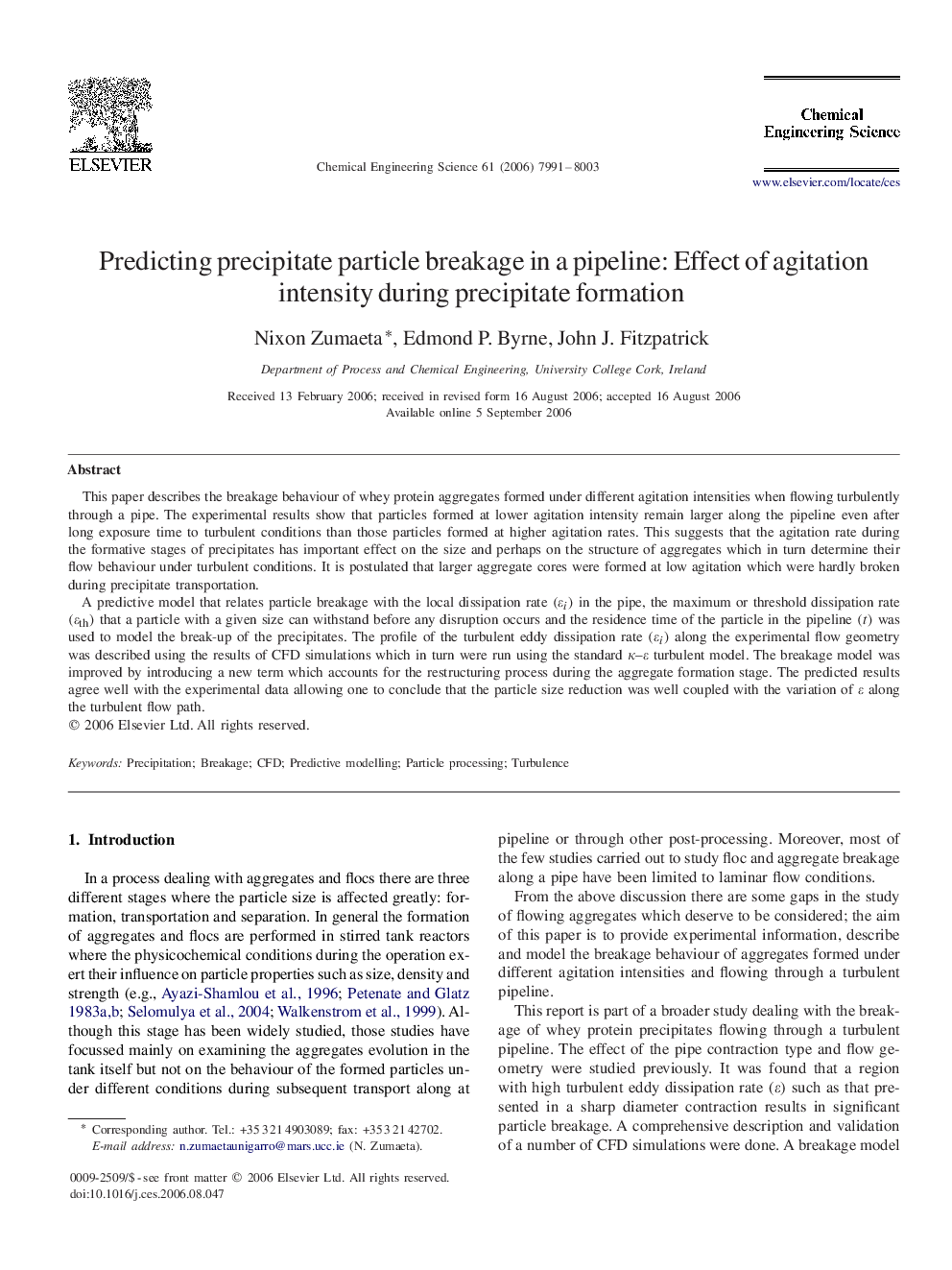| کد مقاله | کد نشریه | سال انتشار | مقاله انگلیسی | نسخه تمام متن |
|---|---|---|---|---|
| 158558 | 457012 | 2006 | 13 صفحه PDF | دانلود رایگان |

This paper describes the breakage behaviour of whey protein aggregates formed under different agitation intensities when flowing turbulently through a pipe. The experimental results show that particles formed at lower agitation intensity remain larger along the pipeline even after long exposure time to turbulent conditions than those particles formed at higher agitation rates. This suggests that the agitation rate during the formative stages of precipitates has important effect on the size and perhaps on the structure of aggregates which in turn determine their flow behaviour under turbulent conditions. It is postulated that larger aggregate cores were formed at low agitation which were hardly broken during precipitate transportation.A predictive model that relates particle breakage with the local dissipation rate (εi)(εi) in the pipe, the maximum or threshold dissipation rate (εth)(εth) that a particle with a given size can withstand before any disruption occurs and the residence time of the particle in the pipeline (t)(t) was used to model the break-up of the precipitates. The profile of the turbulent eddy dissipation rate (εi)(εi) along the experimental flow geometry was described using the results of CFD simulations which in turn were run using the standard κκ–εε turbulent model. The breakage model was improved by introducing a new term which accounts for the restructuring process during the aggregate formation stage. The predicted results agree well with the experimental data allowing one to conclude that the particle size reduction was well coupled with the variation of εε along the turbulent flow path.
Journal: Chemical Engineering Science - Volume 61, Issue 24, December 2006, Pages 7991–8003